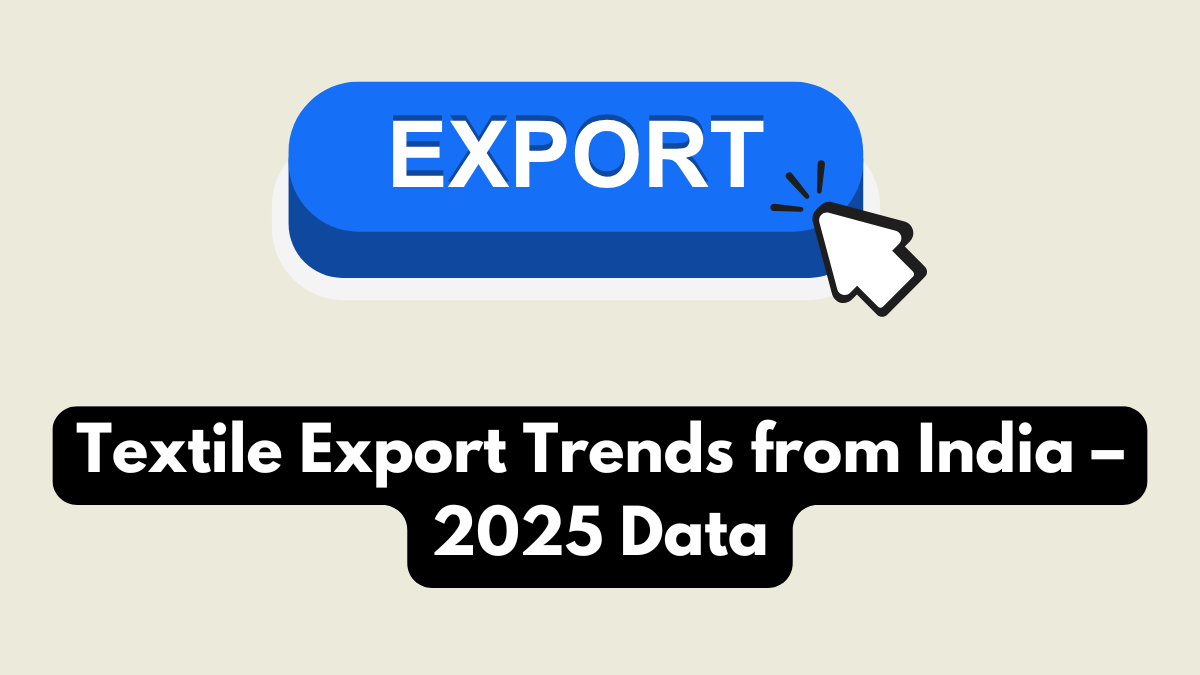India’s textile industry has always been a cornerstone of its economy, and in 2025, Textile Export Data 2025 reveals a story of innovation, expansion, and resilience. With a strong heritage and a modern outlook, the industry is fueling global trade by supplying fabrics, garments, and home textiles to markets around the world.
The sector isn’t just about traditional weaving or manufacturing anymore. In 2025, exporters are combining technology, sustainability, and market intelligence to meet international demand. The Textile Export Data 2025 provides key insights into what products are driving sales, which markets are expanding, and how India is adapting to changes in global trade patterns.

Why Textile Exports Are Booming in 2025
The world is seeing a renewed demand for Indian textiles, and the Textile Export Data 2025 reflects this upward trend. Multiple factors have contributed to India’s success story, positioning the country as one of the top exporters in global trade.
Key reasons for this boom include:
-
Rising international demand for sustainable and organic fabrics
-
Competitive pricing and skilled labor force in India
-
Government policies promoting exports with incentives and subsidies
-
Expansion of e-commerce platforms making Indian textiles accessible worldwide
These factors show why the textile sector is not just surviving—it’s thriving and becoming a driving force in India’s global trade agenda.
Key Figures in Textile Export Data 2025
The Textile Export Data 2025 highlights how various segments of the industry are performing, showing what’s growing fastest in global trade.
| Product Segment | 2024 Export Value (USD) | 2025 Export Value (USD) | Growth % |
|---|---|---|---|
| Cotton Fabrics | $10.5 billion | $12.1 billion | 15% |
| Ready-Made Garments | $16.2 billion | $18.3 billion | 13% |
| Home Textiles | $7.8 billion | $9.0 billion | 15% |
| Technical Textiles | $2.1 billion | $2.8 billion | 33% |
| Silk & Specialty Fabrics | $1.5 billion | $1.9 billion | 27% |
This table illustrates how technical textiles and specialty fabrics are experiencing the fastest growth, signaling new opportunities in global trade for niche markets.
How Exporters Can Use This Data
For exporters, the Textile Export Data 2025 isn’t just information—it’s a roadmap. By studying these figures, businesses can refine their strategies to tap into global trade more effectively.
Strategies include:
-
Investing in high-demand segments like technical and organic textiles
-
Expanding into emerging markets in Africa, Latin America, and Southeast Asia
-
Adopting sustainable practices to meet international buyer expectations
-
Leveraging data insights to negotiate better contracts and partnerships
By aligning with these strategies, exporters can boost profits and secure their place in the global textile market.
Conclusion
The Textile Export Data 2025 confirms that India’s textile industry is a global powerhouse. With innovative products, sustainable practices, and smart strategies, India is expanding its role in global trade. Exporters who understand this data and adapt their businesses accordingly will not only thrive in 2025 but also shape the future of the textile industry.
FAQs
What is Textile Export Data 2025?
It’s the latest set of figures showing how India’s textile exports are performing in global markets.
How does global trade affect Indian textile exports?
Global trade trends dictate demand, pricing, and opportunities for Indian exporters.
Which textile segments are growing fastest in 2025?
Technical textiles and specialty fabrics show the strongest growth in Textile Export Data 2025.
How can exporters benefit from this data?
They can identify high-demand products, explore new markets, and adjust pricing and production strategies.
Why is the textile industry important for India’s economy?
It’s a major source of exports, employment, and innovation, driving India’s role in global trade.
Click here to learn more